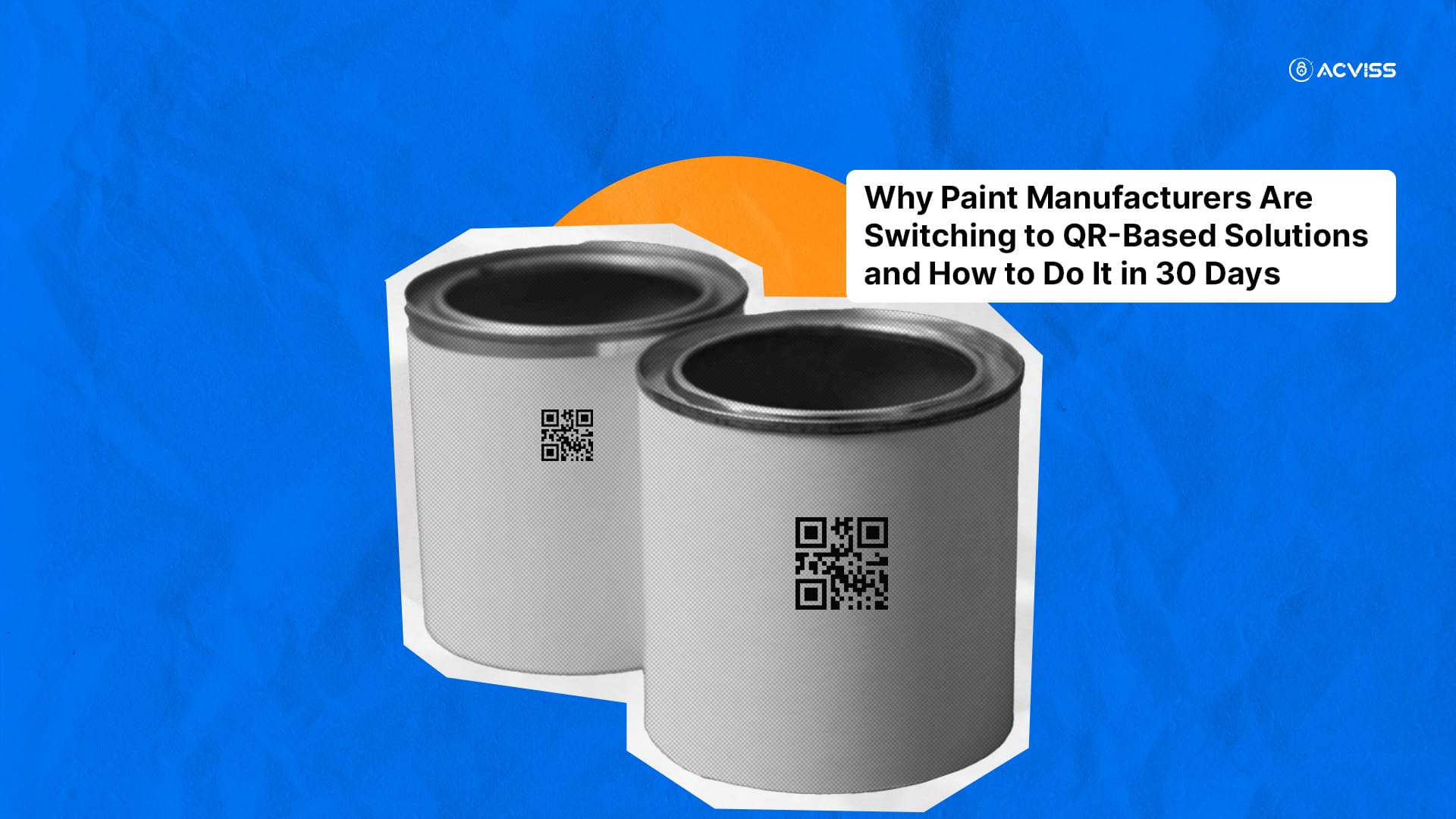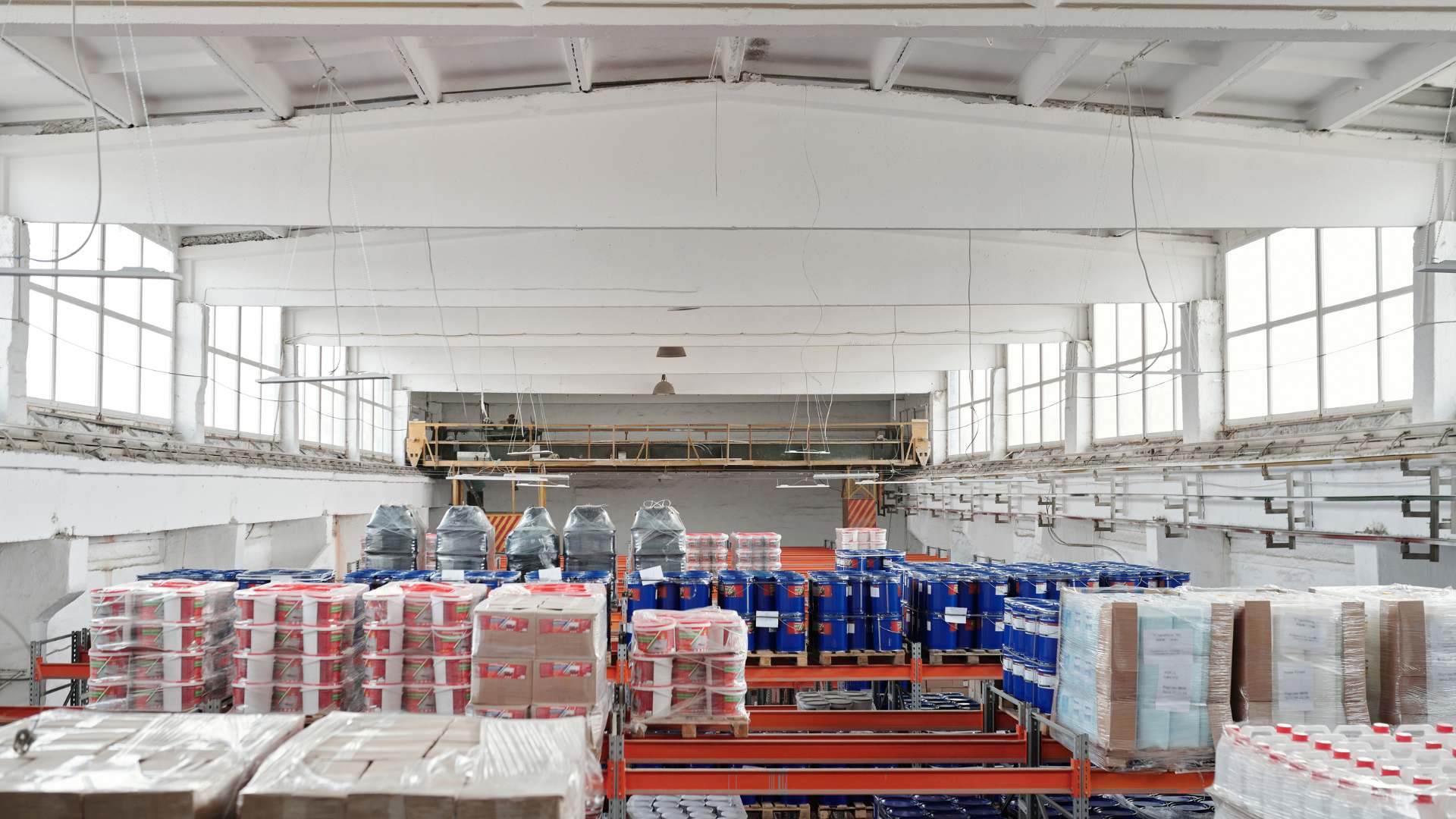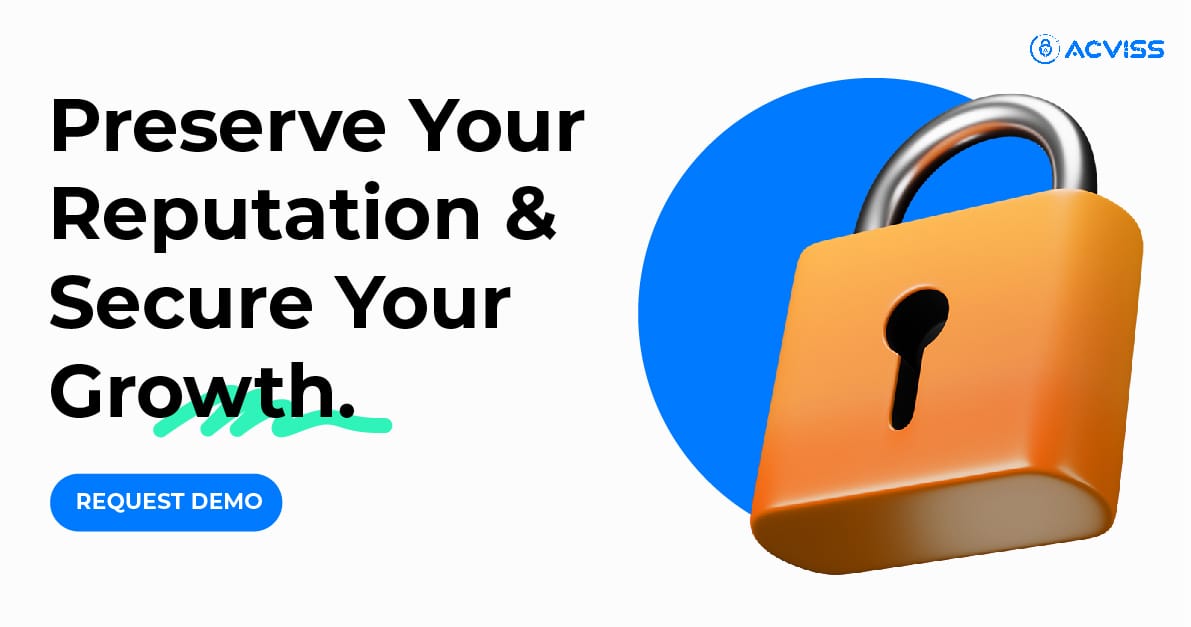Why Paint Manufacturers Are Switching to QR-Based Solutions and How to Do It in 30 Days

The paint manufacturing industry is at a crossroads. Traditional supply chain management simply can't keep pace with today's sophisticated counterfeiting operations, regional diversion schemes, and the increasing complexity of multi-tier distribution networks.
Recent industry data reveals that counterfeit paint products cost legitimate manufacturers an estimated $2.3 billion annually in lost revenue. But the real damage goes beyond immediate sales losses. When inferior counterfeit products fail to deliver expected performance, the reputation damage can take years to repair, and in today's social media landscape, negative experiences spread faster than ever.
For paint manufacturers ready to take control of their supply chain, QR-based traceability offers a proven path forward. Here's how industry leaders are implementing comprehensive track-and-trace solutions in just 30 days.
The True Cost of Supply Chain Blind Spots
Paint manufacturers today face challenges that didn't exist even five years ago. The digitisation of commerce has created new opportunities for bad actors, while the consolidation of retail channels has made unauthorised diversion more lucrative and harder to detect.
- Overproduction Abuse: Contract manufacturers may produce excess inventory beyond authorised quantities, selling the surplus through unauthorised channels. Without unit-level tracking, these "ghost products" are virtually impossible to identify until they surface in unexpected markets, often at prices that undercut your authorised distribution network.
- Regional Diversion: Dealers purchase products in low-cost regions and redistribute them in premium markets, capturing margin that should flow to authorised distributors. This practice not only damages your carefully structured pricing strategy but can also violate territorial agreements with key retail partners.
- Return Fraud: Sophisticated return schemes involve purchasing products in one region and returning them in another, often multiple times. Each fraudulent return represents double revenue loss: the initial sale reversal plus the cost of processing and restocking returned inventory.
- Brand Reputation Damage:Counterfeit products that fail to meet performance standards don't just represent lost sales; they actively damage brand equity. In the paint industry, where product failure can mean costly repainting projects, the stakes for maintaining authentic quality are particularly high.
Why QR Codes Are the Right Solution for Paint Manufacturing

While other industries have experimented with RFID tags, blockchain, and complex serialisation systems, paint manufacturers are discovering that QR-based traceability offers the optimal balance of security, cost-effectiveness, and ease of implementation.
- Universal Compatibility: Every smartphone can scan QR codes, meaning your entire supply chain, from production supervisors to retail customers, can participate in authentication without specialised equipment or extensive training programs.
- Packaging Flexibility: Whether you're dealing with 250ml sample cans or 20-litre commercial containers, QR codes scale seamlessly across your entire product portfolio without requiring different tracking technologies for different SKUs.
- Cost-Effective Security: Modern QR solutions like Acviss's Yellow Label incorporate encryption and tamper-evident features that make cloning virtually impossible, while remaining significantly more affordable than alternative tracking technologies.
- Real-Time Intelligence: Unlike passive tracking systems, QR codes generate actionable data with every scan, providing insights into product movement, authentication attempts, and consumer engagement patterns.
The 30-Day Implementation Framework
Leading paint manufacturers are discovering that QR-based traceability doesn't require months of planning and massive technology investments. Here's the proven framework that companies like yours are using to go from concept to full deployment in just one month.
Week 1: Strategic Foundation (Days 1-7)
- Define Success Metrics: Start by identifying your primary pain points. Are you losing revenue to counterfeit products in specific geographic regions? Dealing with unauthorised returns from particular dealer networks? Experiencing brand reputation damage from inferior knockoff products? Clear success metrics will guide every subsequent decision.
- Inventory Assessment: Catalogue your entire product portfolio, including seasonal SKUs, limited editions, and private label products. Document current packaging specifications, label placement options, and any regulatory requirements that might affect QR code implementation.
- Stakeholder Alignment: Secure commitment from operations, IT, distribution, and marketing teams. Each department needs to understand not just their role in implementation, but how traceability will solve their specific challenges. Operations gains better inventory control, marketing gets consumer engagement data, and distribution can identify and eliminate problem accounts.
- Technology Requirements: Evaluate your current IT infrastructure's ability to handle real-time tracking data from potentially thousands of daily scans. Most manufacturers find that cloud-based solutions offer the scalability and reliability needed for effective traceability without requiring significant infrastructure investments.
Week 2: Technical Implementation (Days 8-14)
- Security-First QR Design: Standard QR codes are easily copied, defeating the purpose of authentication. Implement QR solutions with built-in security features, encryption, unique algorithms, or tamper-evident elements that make counterfeiting immediately detectable.
- Strategic Code Placement: QR code location affects both security and usability. Codes need to be easily scannable for legitimate verification while being difficult for counterfeiters to access and copy. Consider placement on can bottoms, inside label edges, or integrated into existing product labelling.
- Production Integration: Determine whether you'll print codes during production, apply pre-printed labels, or use inline printing systems. Each approach has implications for production speed, cost per unit, and security level. Many manufacturers find that inline printing offers the best balance of security and efficiency.
- Dashboard Configuration: Set up your tracking platform with appropriate user roles and access levels. Production supervisors need different data access than regional sales managers or executive leadership. Configure automatic reporting for key metrics and establish alert systems for unusual activity patterns.

Week 3: Pilot Testing and Training (Days 15-21)
- Controlled Pilot Launch: Begin with a limited production run—perhaps one product line or a specific package size. This allows you to identify and resolve technical issues before full deployment while building confidence in the system among your team.
- Cross-Platform Testing: Verify that QR codes scan reliably across different smartphone models, lighting conditions, and user scenarios. Test the complete workflow from production scanning through retail verification to ensure data accuracy at every step.
- Team Training: Educate key personnel on both the technical aspects of the system and its strategic importance. Warehouse managers need to understand new scanning procedures, while sales teams should be prepared to explain the benefits to distributors and dealers.
- Data Validation: Monitor pilot data closely for accuracy and completeness. Verify that location data, timestamps, and user information are being captured correctly. Establish baseline metrics for scan frequency and geographic distribution that will help identify anomalies during full deployment.
Week 4: Full Deployment and Network Rollout (Days 22-30)
- Production Scaling: Expand QR coding to your complete product portfolio. Coordinate with production teams to ensure consistent code application without impacting throughput or quality standards.
- Distribution Network Engagement: Launch communication campaigns to educate distributors and dealers about the new authentication system. Provide clear instructions for scanning procedures and explain how traceability benefits their business by protecting against counterfeit inventory and ensuring product authenticity.
- Monitoring and Optimisation: Implement comprehensive tracking of system usage across your network. Monitor adoption rates among distributors and dealers, and proactively address any technical issues or workflow conflicts that emerge during rollout.
- Consumer Education: Develop customer-facing materials explaining how to verify product authenticity using the QR system. This not only helps protect against counterfeit products but also positions your brand as a technology leader committed to product integrity.
Measurable Business Impact
Paint manufacturers implementing QR-based traceability typically see measurable results within 90 days of full deployment. Key performance indicators include:
- Revenue Protection: Reduction in counterfeit product reports and associated customer complaints. Many manufacturers see 60-80% decreases in counterfeit-related issues within the first quarter of implementation.
- Distribution Efficiency: Improved inventory visibility leads to better demand forecasting and reduced overstock situations. Real-time tracking data helps optimise inventory placement and identify slow-moving products before they become costly write-offs.
- Customer Engagement: QR codes create new touchpoints for customer interaction. Beyond authentication, these scans can provide application guides, warranty registration, or promotional offers, transforming a security feature into a customer service tool.
- Operational Intelligence: Scanning patterns reveal insights into distribution network performance, seasonal demand variations, and regional market dynamics that traditional sales data doesn't capture.
Industry-Specific Advantages for Paint Manufacturers

Paint manufacturers gain unique advantages from QR-based traceability that extend beyond basic product authentication:
- Quality Assurance: Link QR codes to batch-specific technical data, allowing customers to access detailed product information, including coverage rates, recommended application temperatures, and compatibility with other products in your line.
- Warranty Management: Streamline warranty claims by linking product authentication to purchase verification and installation guidelines. This reduces fraudulent warranty claims while improving customer satisfaction through faster processing.
- Professional Network Benefits: For trade-focused products, QR codes can provide contractors and professional painters with instant access to technical data sheets, safety information, and application videos, positioning your brand as the preferred choice for professional users.
- Regulatory Compliance: In markets with increasing environmental or safety regulations, QR codes can provide instant access to compliance documentation, VOC levels, and disposal instructions, helping customers meet their own regulatory requirements.
Investment and ROI Considerations
The total cost of implementing QR-based traceability typically represents less than 1% of annual revenue for most paint manufacturers, while the protection against counterfeit losses, return fraud, and brand reputation damage often provides 5-10x return on investment within the first year.
Implementation costs include QR code generation and application, dashboard licensing, and staff training. Ongoing costs primarily involve system maintenance and data storage, which scale predictably with business growth.
Many manufacturers find that the operational intelligence gained from tracking data, insights into distribution efficiency, market demand patterns, and customer behaviour, provides additional value that justifies the investment, independent of security benefits.
Next Steps for Paint Industry Leaders
The paint industry's most successful companies aren't waiting for traceability problems to escalate. They're implementing proactive solutions that protect revenue, enhance customer relationships, and provide competitive advantages in an increasingly complex marketplace.
QR-based traceability offers paint manufacturers a proven path to supply chain control without requiring massive technology investments or lengthy implementation timelines. The 30-day framework outlined here provides a roadmap that companies like yours are using to transform their approach to product authentication and supply chain management.
The question isn't whether your company needs better traceability; it's whether you'll implement it strategically now or reactively after problems have already impacted your revenue and brand reputation.
Ready to take control of your supply chain? The time to act is now. Connect with our expert team today
